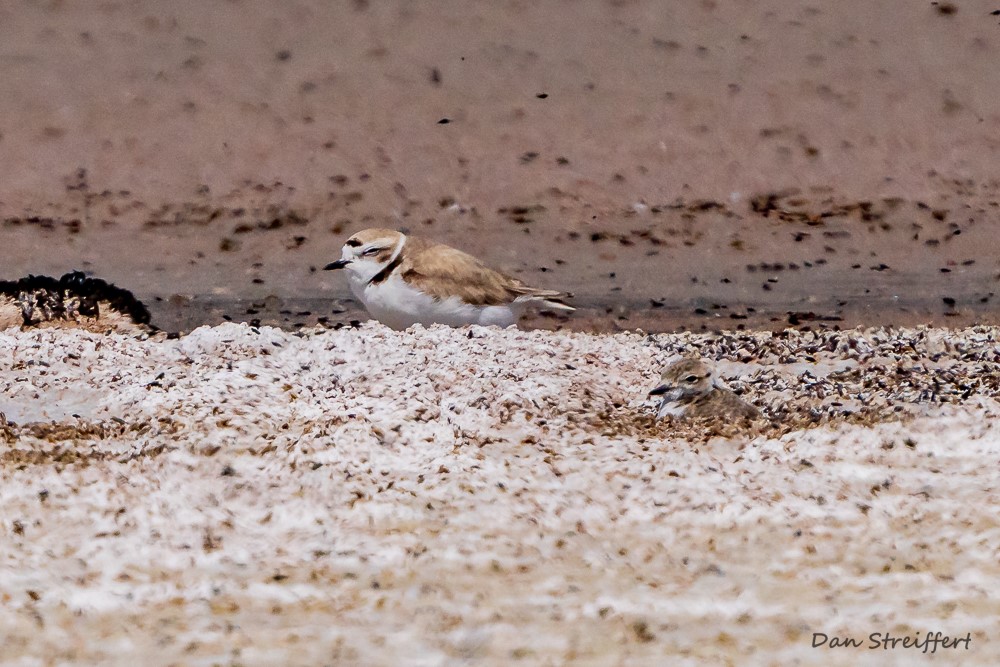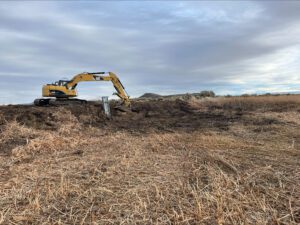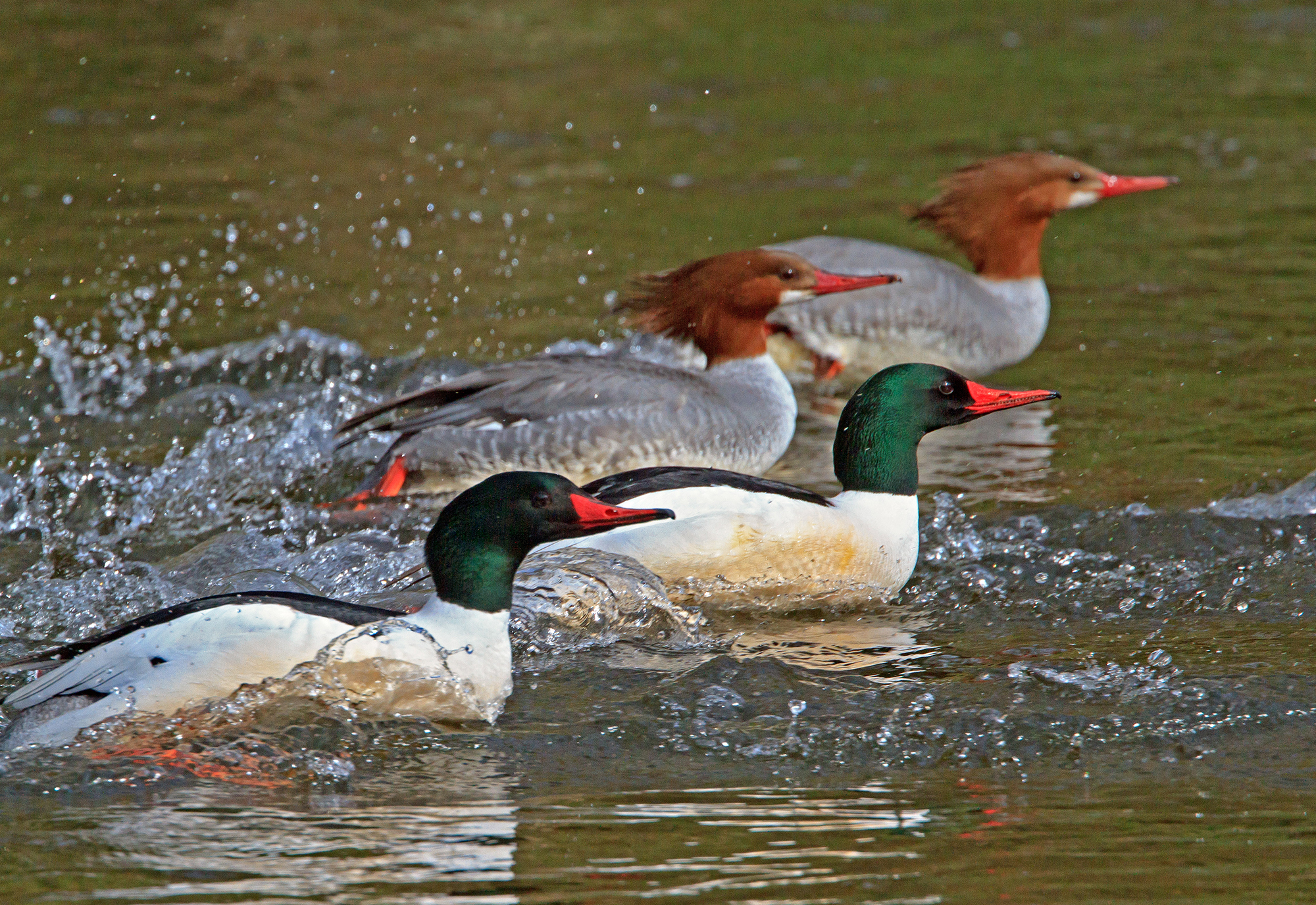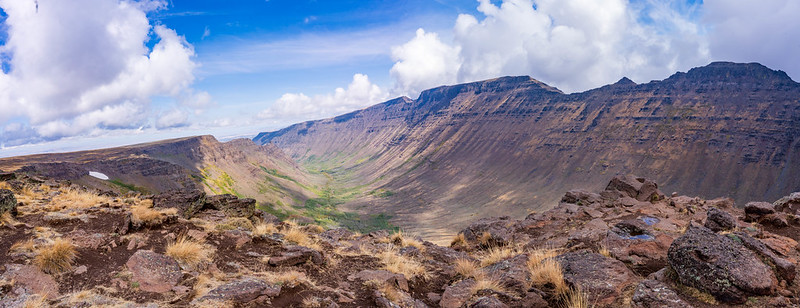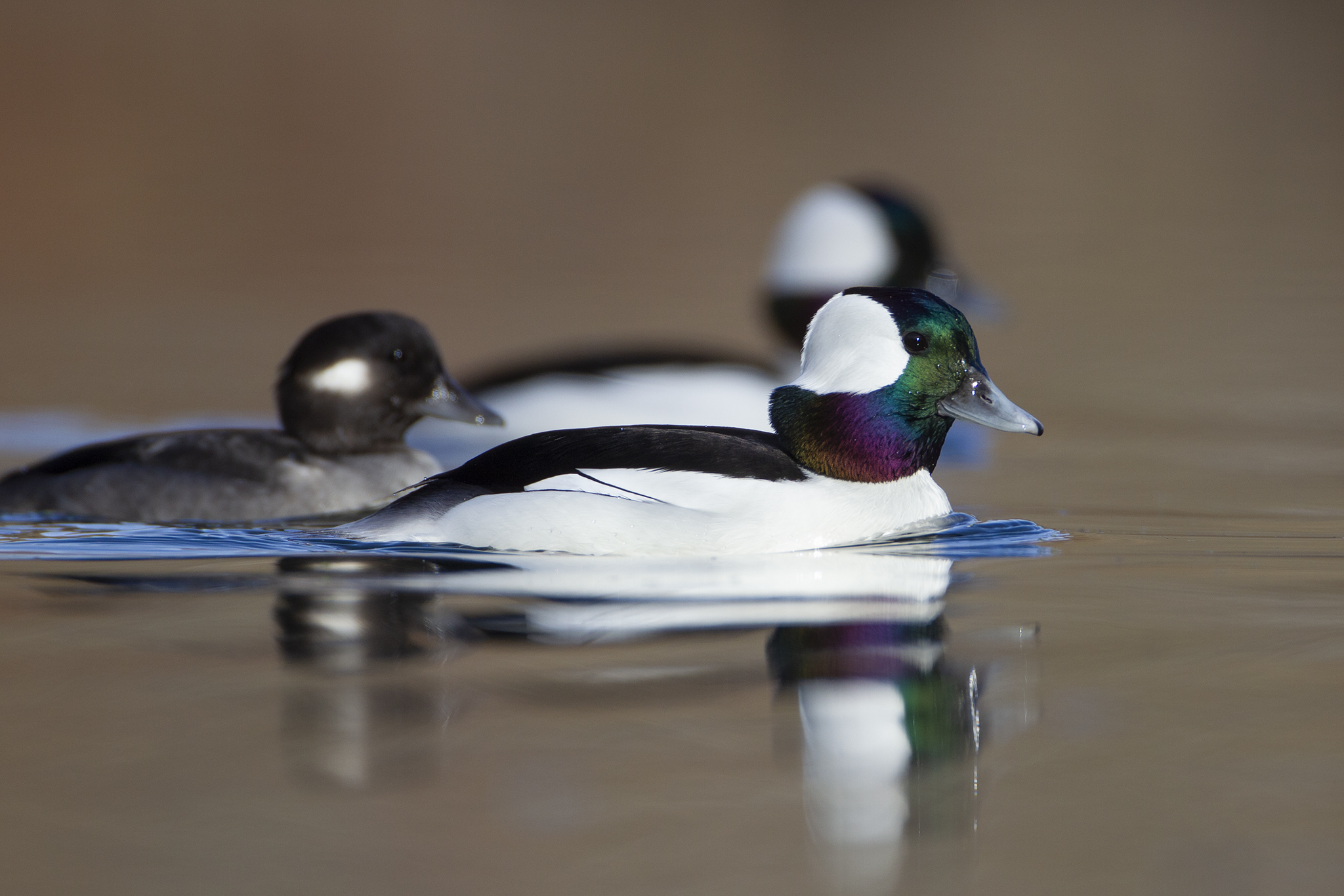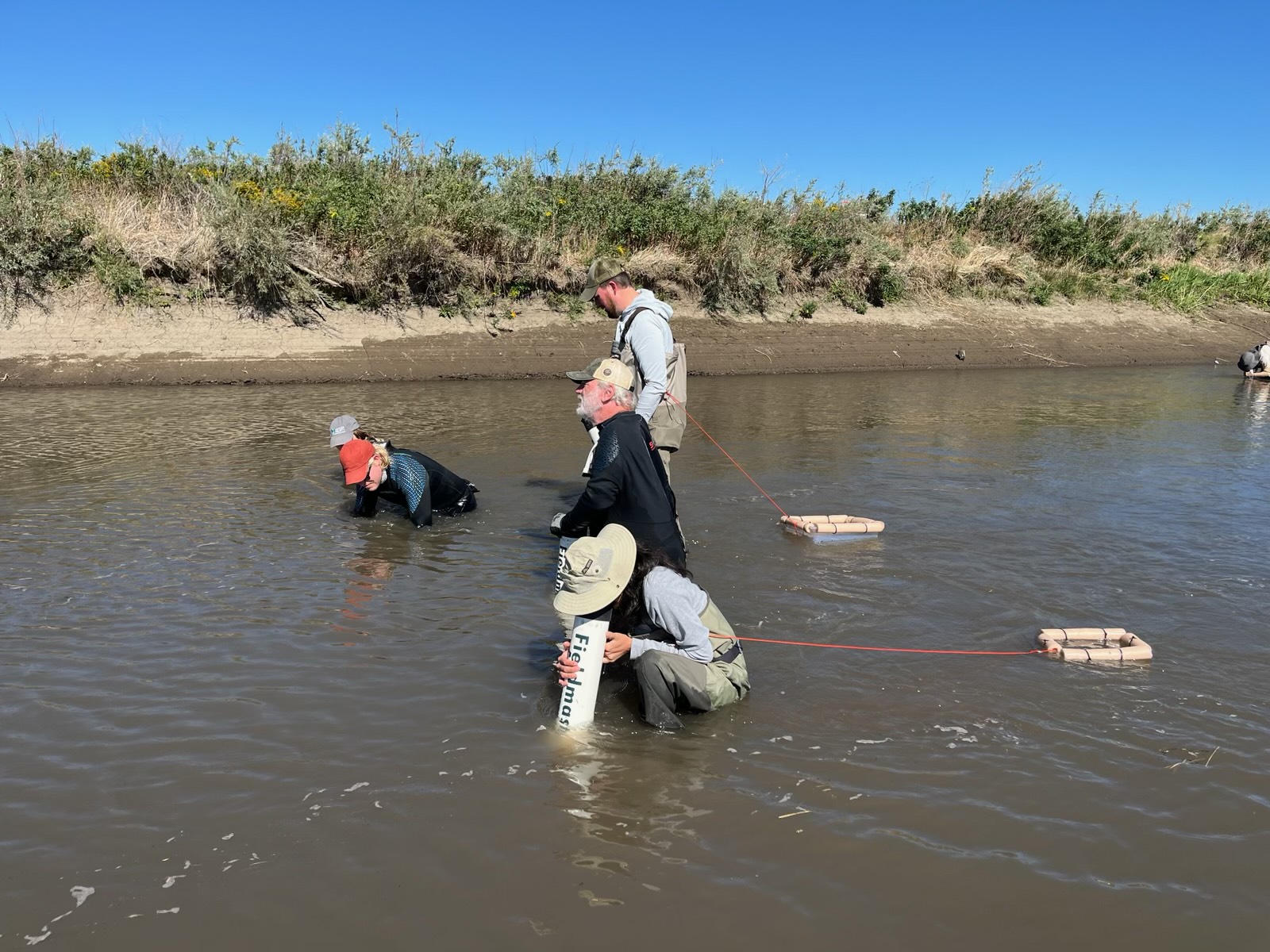Written by Peter Pearsall/Photo of snowy plover and chick at Harney Lake by Dan Streiffert
The sparrow-sized snowy plover is North America’s smallest plover species and one of the plainest in appearance, being mostly pale gray and white. It can be found along the Pacific and Gulf coasts down into Central and South America. In the western United States, a distinct population known as the Western snowy plover is further divided into two separate groups: coastal (a federally listed population nesting along the Pacific coast) and interior (a non-listed population breeding along alkaline lakes in the interior West).
At Malheur Refuge, this “ghost of the salt flats” nests along barren alkaline shorelines, usually within 100 yards of water, and is attracted to hyper-saline habitats supporting an abundance of shore flies. Harney Lake is their primary nesting area at Malheur Refuge, and its use depends on lake levels.
The breeding season for snowy plovers at Malheur Refuge typically starts in late May/early June. Males use their feet to scrape numerous shallow depressions in the alkali sediment; if one of these scrapes passes muster with a female, she’ll mate with him. Clutches commonly consist of three eggs, laid directly in the scrape. Most snowy plovers are polyandrous (i.e., a female may breed with more than one male), and share incubation duties. Females typically desert the brood shortly after hatching, leaving the chick-rearing duties to the male.
This year during Harney Lake snowy plover surveys, staff and volunteers from Malheur Refuge and Portland Audubon were able to find a small amount of water with 45 snowy plovers foraging and nesting nearby. These surveys were part of a larger effort to survey for snowy plovers east of the Cascade Range; a largescale survey of Interior snowy plover populations has not happened for at least 5 years.

